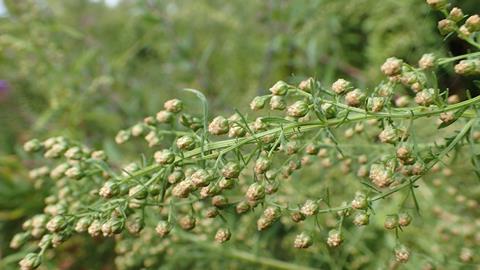Artemisinin, best known as an antimalarial drug, may offer very different therapeutic applications. In Science, Chinese researchers describe how an artemisinin derivative inhibits the excess production of ‘male’ hormones, which is a hallmark symptom of polycystic ovary syndrome (PCOS).
Approximately 10-13% of women of childbearing age suffer from polycystic ovary syndrome (PCOS), a hormonal disorder characterized by excessive formation of vesicles or cysts in the ovaries, which in turn hinders ovulation with reduced fertility as a result. Women with PCOS often have low levels of follicle stimulating hormone (FSH), while the levels of luteinising hormone (LH) and testosterone are too high. Due to this hormonal imbalance, the condition is also associated with a disturbed metabolism, abnormal and abundant body and facial hair, and a higher risk of developing type 2 diabetes.
Despite its high prevalence, a curative treatment for this condition is still lacking, but that might change. On June 13, Chinese researchers described in Science the therapeutic potential of artemether (ATM), a derivative of the antimalarial drug artemisinin, to decrease, via an indirect pathway, the production of testosterone in the ovaries. ATM stimulates the degradation of the enzyme CYP11A1 (cytochrome P450 family 11 subfamily A member 1), which catalyses the conversion of cholesterol to pregnenolone, being the first step in testosterone biosynthesis.
Androgens
In women with PCOS , the levels of this enzyme are elevated, as well as those of other key enzymes involved in the production of androgens or ‘male’ hormones. Specifically, ATM binds to lon peptidase 1 (LONP1), an ATP-dependent serine protease that hydrolyses peptide bonds to break down wrongly folded or oxidized proteins in the mitochondria. Through this binding, the artemisinin derivative stimulates the interaction between CYP11A1 and LONP1, triggering LONP1-catalysed degradation of the CYP11A1 protein. Less CYP11A1 means a decreased production of androgens in the ovaries.
Additional experiments showed that an induced higher production of LONP1 also led to lower androgen levels. The researchers also found that once androgen production was scaled back to levels characteristic of PCOS, the binding between LONP1 and CYP11A1 decreased. The amount of LONP1 decreased, while that of CYP11A1 increased again.
Clinical study
The inhibitory effect of ATM was found to depend on direct binding to the proteolytic domain of LONP1, and was also found to be dose-dependent. The researchers tested ATM as a therapy for PCOS in rodent models and in an initial pilot clinical trial with 19 PCOS patients. This group was administered dihydroartemisinin, the active metabolite of all artemisinin variants, for 12 weeks. The hallmark symptoms of PCOS became less prominent: testerone levels decreased and fewer vesicles were detected in the ovaries. In 12 of the 19 women, their menstrual cycle also normalised. The drug caused no side effects.
‘Although further studies are needed to fully understand the long-term effects and to optimise the dosage for the best therapeutic outcome, the discovery of artemisinins as a treatment for PCOS nevertheless shows a promising new approach that is going to change the therapeutic field,’ Elisabet Stener-Victorin of the Swedish Karolinska Institute writes in a related perspective. She further points out that follow-up research is also desirable to elucidate the effect of artemisinins on other PCOS symptoms. For instance, PCOS is also associated with abnormal lipid metabolism and insulin sensitivity.
In previous studies, the same team discovered that artemisinin and its derivatives ATM, artesunate (ATS) and SM934, can also activate brown adipose tissue. The energy consumption and insulin sensitivity of brown adipose cells increases, potentially offer a protective effect against obesity and metabolic diseases. But it remains to be seen if these effects also occur in adipose tissue and glucose metabolism of women with PCOS. Moreover, researchers only examined the effect of ATM on testosterone biosynthesis in the ovaries, while androgens are also produced in the adrenal glands.













Nog geen opmerkingen